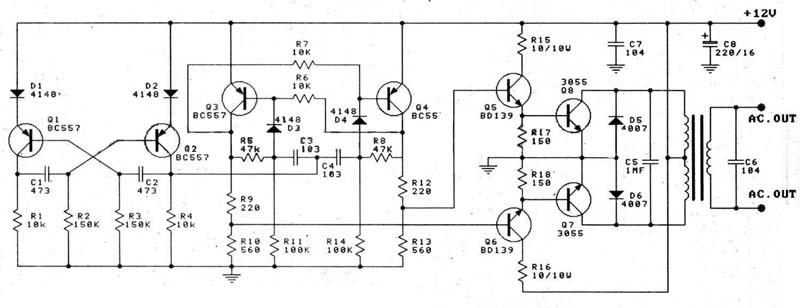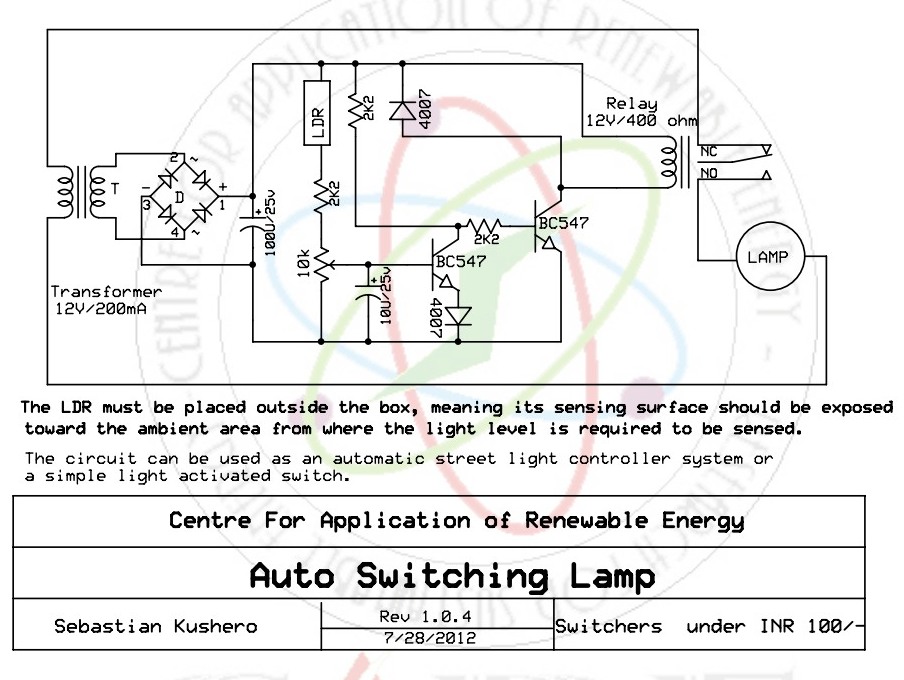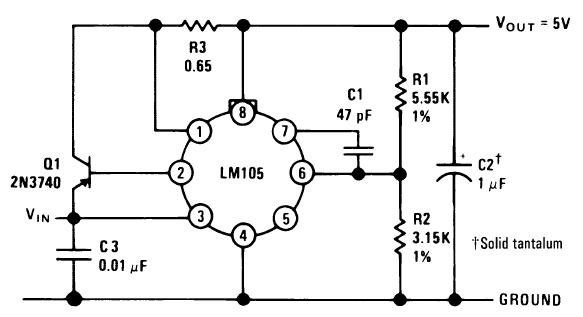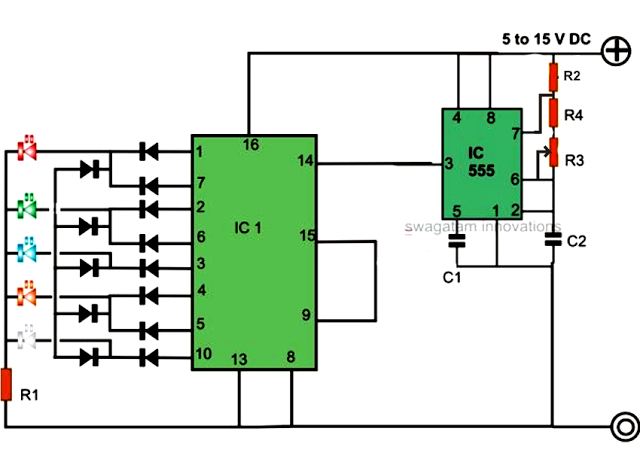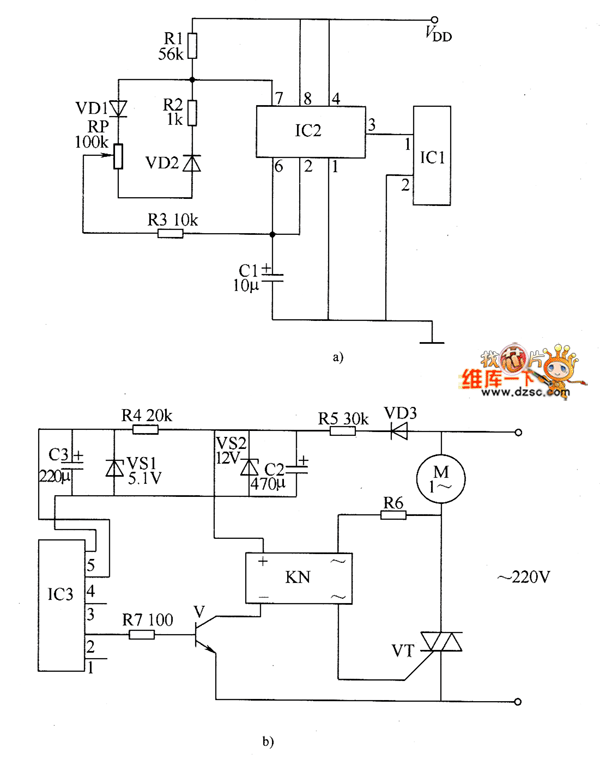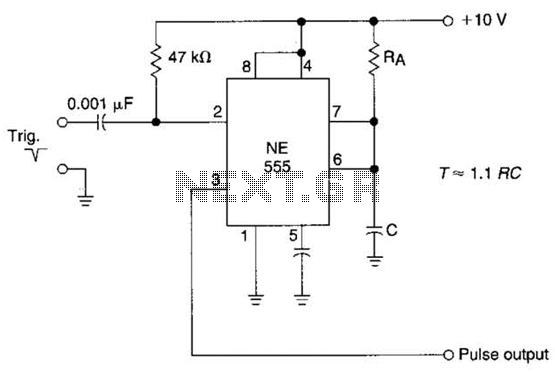
LM555 interlocked monostable timer circuit
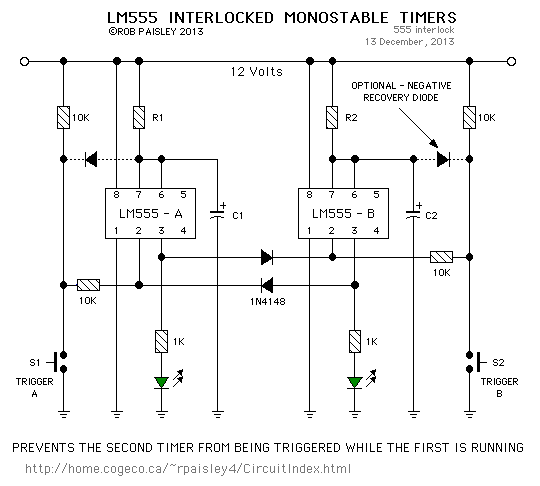
This circuit is straightforward. The initial 555 timer prevents the second timer from being activated while the first is operational. Drive the circuit with a simple 12-volt power supply.
The circuit utilizes two 555 timer integrated circuits (ICs) configured in a monostable arrangement. The first 555 timer serves as the primary control element, which, when triggered, generates a pulse that maintains its output high for a predetermined duration. This output is connected to the trigger input of the second 555 timer.
When the first timer is in operation, its output remains high, effectively preventing the second timer from being triggered. The timing duration for the first timer is determined by an external resistor and capacitor. The values of these components can be calculated using the formula: T = 1.1 * R1 * C1, where T is the time in seconds, R1 is the resistance in ohms, and C1 is the capacitance in farads.
The second 555 timer is designed to activate only after the first timer has completed its timing cycle. This ensures that the two timers do not interfere with each other’s operation. The output of the second timer can be used to drive additional circuitry, such as LEDs or relays, depending on the application requirements.
Powering the circuit with a 12-volt supply is ideal, as it falls within the operating range of the 555 timer ICs, which typically accept voltages from 4.5 volts to 15 volts. Proper bypass capacitors should be placed close to the power pins of each timer to ensure stable operation and minimize voltage fluctuations.
Overall, this circuit design is effective for applications requiring sequential timing operations, where the coordination of two timing events is necessary without overlap.This circuit is simple. The first 555 timer prevents the second timer from being triggered while the first is running.
The circuit utilizes two 555 timer integrated circuits (ICs) configured in a monostable arrangement. The first 555 timer serves as the primary control element, which, when triggered, generates a pulse that maintains its output high for a predetermined duration. This output is connected to the trigger input of the second 555 timer.
When the first timer is in operation, its output remains high, effectively preventing the second timer from being triggered. The timing duration for the first timer is determined by an external resistor and capacitor. The values of these components can be calculated using the formula: T = 1.1 * R1 * C1, where T is the time in seconds, R1 is the resistance in ohms, and C1 is the capacitance in farads.
The second 555 timer is designed to activate only after the first timer has completed its timing cycle. This ensures that the two timers do not interfere with each other’s operation. The output of the second timer can be used to drive additional circuitry, such as LEDs or relays, depending on the application requirements.
Powering the circuit with a 12-volt supply is ideal, as it falls within the operating range of the 555 timer ICs, which typically accept voltages from 4.5 volts to 15 volts. Proper bypass capacitors should be placed close to the power pins of each timer to ensure stable operation and minimize voltage fluctuations.
Overall, this circuit design is effective for applications requiring sequential timing operations, where the coordination of two timing events is necessary without overlap.This circuit is simple. The first 555 timer prevents the second timer from being triggered while the first is running.
Drive the circuit with a simple 12 volt power supply.
🔗 External reference